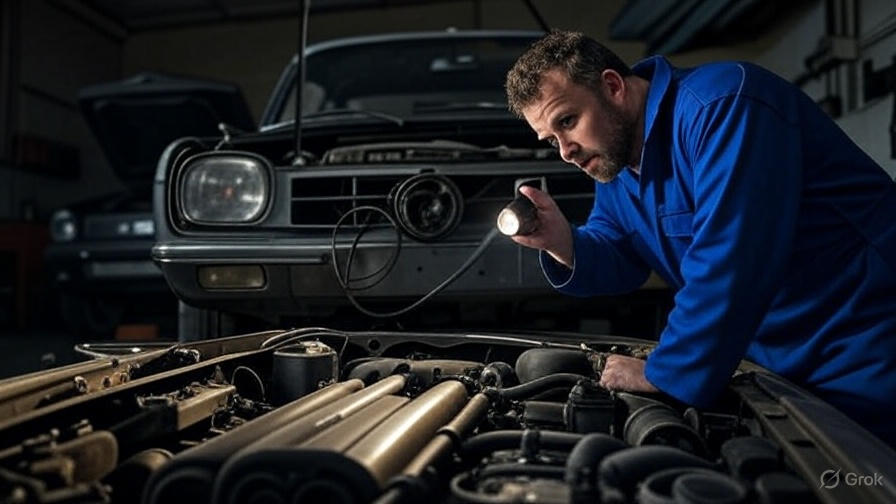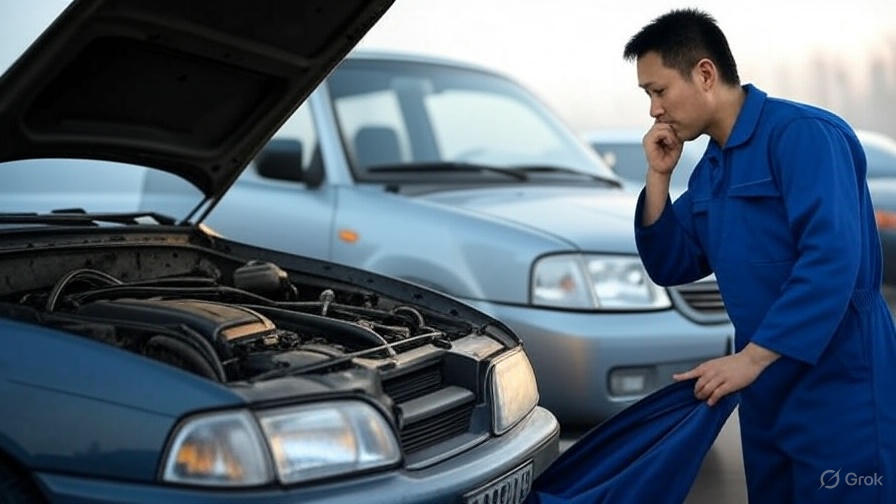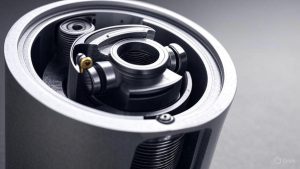The check engine light glares at you from your dashboard like an angry orange eye. Your smog test appointment looms ahead. You’re wondering if there’s any way to pass emissions testing with that persistent warning light staring back at you.
The harsh reality hits most drivers at the worst possible moment. Your vehicle registration expires soon, and you need a passing smog certificate to renew it. That stubborn engine light has been on for weeks, maybe months. Now you’re facing the possibility of expensive repairs or the dreaded smog test failure.
This comprehensive guide will walk you through everything you need to know about passing smog tests when your check engine light is illuminated. You’ll discover practical strategies, legal requirements, and step-by-step solutions that can help you navigate this frustrating situation.
The Truth About Check Engine Lights and Smog Tests
Most states with emissions testing programs automatically fail vehicles with illuminated check engine lights. This policy exists because the check engine light indicates your vehicle’s onboard diagnostic system (OBD-II) has detected a problem that could affect emissions performance.
The OBD-II system continuously monitors your engine’s performance and emissions control systems. When it detects a malfunction that could increase harmful emissions, it triggers the check engine light and stores diagnostic trouble codes in the vehicle’s computer memory.
Smog technicians connect their testing equipment directly to your vehicle’s OBD-II port during the inspection. If the system shows any stored trouble codes or readiness monitors that haven’t completed their cycles, your vehicle will likely fail the test immediately.
However, you can take several steps to address this issue before your test date. The key lies in understanding what’s causing your check engine light and taking appropriate action to resolve the underlying problem.
Common Reasons for Check Engine Light Activation
Your check engine light can illuminate for dozens of different reasons. Some causes are simple and inexpensive to fix, while others require significant repairs. Here are the most common culprits:
Oxygen Sensor Problems Faulty oxygen sensors rank among the leading causes of check engine lights. These sensors monitor the air-fuel mixture in your exhaust system. When they malfunction, your engine runs inefficiently and produces higher emissions. Replacing a bad oxygen sensor typically costs between $200 and $400.
Catalytic Converter Issues A failing catalytic converter often triggers the check engine light because it can’t properly reduce harmful emissions. This represents one of the most expensive potential repairs, sometimes costing $1,000 or more. However, catalytic converter problems often stem from other issues like faulty oxygen sensors or engine misfires.
Mass Airflow Sensor Failure The mass airflow sensor measures how much air enters your engine. When it fails, your engine computer can’t properly calculate the correct fuel mixture. This leads to poor performance and increased emissions. Replacing this sensor usually runs between $150 and $300.
Evaporative Emission Control System Leaks Your vehicle’s EVAP system prevents fuel vapors from escaping into the atmosphere. Loose gas caps, cracked hoses, or faulty purge valves can trigger EVAP-related codes. These repairs often cost less than $200 and represent some of the easier fixes.
Engine Misfires Misfiring cylinders create incomplete combustion, leading to higher emissions and potential catalytic converter damage. Causes range from worn spark plugs (inexpensive) to more serious engine problems (expensive).
Steps to Take Before Your Smog Test
You have several options when facing a smog test with an active check engine light. The best approach depends on your specific situation, budget, and timeline.
Get a Diagnostic Scan Start by having your vehicle’s diagnostic trouble codes read. Many auto parts stores offer free code scanning services. You can also purchase an inexpensive OBD-II scanner for around $25-50. This scan will reveal the specific codes causing your check engine light.
Write down all the codes and research what they mean. Some codes indicate minor issues you can fix yourself, while others signal major problems requiring professional attention. Understanding your specific codes helps you make informed decisions about repairs.
Research Your State’s Requirements Emissions testing requirements vary significantly between states. Some states offer hardship exemptions for vehicles that would cost more to repair than they’re worth. Others provide temporary waivers under specific circumstances.
Contact your local DMV or emissions testing authority to understand your options. Ask about:
- Hardship exemptions and their requirements
- Temporary registration extensions
- Appeal processes for failed tests
- Required documentation for exemptions
Calculate Repair Costs vs. Vehicle Value Get repair estimates from qualified mechanics for the issues causing your check engine light. Compare these costs to your vehicle’s current market value. If repairs exceed 50-75% of your car’s worth, you might qualify for a hardship exemption in many states.
Document everything with written estimates from licensed repair facilities. You’ll need this paperwork if you decide to pursue an exemption.
Quick Fixes That Might Clear Your Check Engine Light
Some check engine light causes have simple, inexpensive solutions. Try these steps before assuming you need major repairs:
Check and Tighten Your Gas Cap A loose or damaged gas cap causes many EVAP system codes. Remove your gas cap completely, inspect it for cracks or damaged seals, and reinstall it tightly. Turn the cap until you hear several clicks.
Drive your vehicle for 50-100 miles after tightening the gas cap. The check engine light may turn off automatically if this was the only issue. However, you’ll still need to complete several drive cycles before all readiness monitors reset.
Replace Basic Maintenance Items Old spark plugs, dirty air filters, and contaminated engine oil can trigger check engine lights. These items need regular replacement anyway, so updating them might resolve your emissions issues while improving your vehicle’s performance.
Change your oil using the manufacturer’s recommended grade and viscosity. Install a new air filter if yours looks dirty or clogged. Replace spark plugs if they’re overdue for service according to your maintenance schedule.
Use Fuel System Cleaners Carbon deposits in your fuel injectors, intake valves, and combustion chambers can affect emissions performance. High-quality fuel system cleaners sometimes help reduce emissions-related codes.
Add a reputable fuel system cleaner to your gas tank and drive until you’ve consumed the entire tank. This process can take several hundred miles to show results, so start early if you’re trying this approach.
The Drive Cycle Process: Resetting Your Vehicle’s Monitors
Even after fixing the problem causing your check engine light, your vehicle’s computer needs time to verify that repairs solved the issue. This process involves completing specific drive cycles that test different emissions control systems.
Basic Drive Cycle Requirements Most vehicles need to complete several readiness monitors before passing a smog test. These monitors test systems like:
- Oxygen sensors
- Catalytic converter efficiency
- EVAP system integrity
- EGR valve function
- Secondary air injection
Each monitor requires specific driving conditions to complete its test cycle. You typically need a combination of city driving, highway driving, and idle time over several days or weeks.
Generic Drive Cycle Procedure Start with a cold engine (parked for at least 8 hours). Drive normally for about 20 minutes, including both stop-and-go traffic and steady highway speeds above 45 mph. Let your vehicle idle for several minutes, then turn it off.
Repeat this process over multiple days. Check your readiness monitors using an OBD-II scanner to see which ones have completed. Different vehicle makes and models have specific drive cycle requirements, so research your particular vehicle for best results.
Factors That Prevent Monitor Completion Several conditions can prevent your readiness monitors from completing their cycles:
- Frequent short trips that don’t allow the engine to fully warm up
- Disconnecting the battery, which clears all monitor data
- Continuing mechanical problems that prevent proper system operation
- Extreme weather conditions
Be patient with this process. Some monitors can take weeks of normal driving to complete, especially the catalytic converter efficiency monitor.

Professional Repair Options and Considerations
When simple fixes don’t resolve your check engine light, professional diagnosis and repair become necessary. Here’s how to approach this situation strategically:
Choose the Right Repair Facility Look for shops that specialize in emissions repairs and have experience with your vehicle’s make and model. ASE-certified technicians with emissions training can diagnose problems more efficiently than general repair shops.
Get quotes from multiple facilities before committing to repairs. Prices can vary significantly between shops, especially for complex jobs like catalytic converter replacement.
Understand Warranty Coverage Many emissions-related components have extended warranties beyond your vehicle’s basic coverage. Catalytic converters, for example, must be warranted for 8 years or 80,000 miles on vehicles sold after 1995.
Check with your vehicle manufacturer or authorized dealers about warranty coverage before paying for emissions repairs. You might qualify for free or reduced-cost repairs under federal emissions warranties.
Consider Used or Aftermarket Parts Original equipment manufacturer (OEM) parts often cost significantly more than aftermarket alternatives. For older vehicles, aftermarket emissions components can provide substantial savings while still meeting legal requirements.
Discuss part options with your mechanic. Some aftermarket parts work just as well as OEM components, while others may have shorter lifespans or cause compatibility issues.
State-Specific Exemptions and Alternatives
Many states recognize that emissions repairs can sometimes cost more than a vehicle is worth. These states offer various exemption programs for qualifying vehicles:
Economic Hardship Exemptions Most states with emissions testing offer hardship exemptions when repair costs exceed a certain percentage of your vehicle’s value. Typical thresholds range from $400 to $1,200 in total repair costs.
To qualify, you’ll need:
- Written repair estimates from licensed facilities
- Documentation of your vehicle’s current market value
- Proof that you’ve spent the minimum required amount on repairs (usually $400-600)
- Current vehicle registration and insurance
Temporary Extensions Some states grant temporary registration extensions for vehicles undergoing emissions repairs. These extensions typically last 30-60 days and allow you to keep driving while addressing check engine light issues.
Apply for extensions before your registration expires. Late applications may result in additional fees or penalties.
Alternative Compliance Options Certain states offer alternative compliance paths for older vehicles or those with specific hardships. These might include:
- Reduced-price registration for high-emission vehicles
- Retirement programs that pay you to scrap non-compliant vehicles
- Special permits for antique or collector vehicles
Research your state’s specific programs through their DMV or environmental agency websites.
What Happens If You Fail Your Smog Test
Failing a smog test isn’t the end of the world, but it does create additional steps and potential costs:
Immediate Consequences You cannot renew your vehicle registration with a failed smog certificate. Most states give you a grace period (typically 30 days) to address the problems and retest.
During this grace period, you can usually continue driving your vehicle legally. However, you cannot sell or transfer ownership without a passing smog certificate.
Retest Requirements After making repairs, you’ll need to return for another smog test. Some states offer one free retest if you return within a specified timeframe (usually 30 days). Others charge full price for each test attempt.
Keep all repair receipts and documentation. Some states require proof of repairs before allowing retests, especially if you’re seeking exemptions.
Cost Accumulation Failed smog tests can become expensive quickly. Between diagnostic fees, repair costs, multiple test attempts, and potential late registration penalties, costs can easily reach hundreds or thousands of dollars.
Budget for these expenses early in the process. Getting a diagnostic scan and repair estimates before your registration expires gives you more time to explore all options.
Prevention Strategies for Future Smog Tests
Once you resolve your current check engine light issues, take steps to prevent future problems:
Regular Maintenance Schedule Follow your vehicle’s recommended maintenance schedule religiously. Regular oil changes, filter replacements, and tune-ups prevent many emissions-related problems.
Keep detailed maintenance records. Some states consider maintenance history when evaluating exemption applications.
Quality Fuel and Additives Use quality gasoline from reputable stations. Top-tier gasoline contains detergents that help keep your fuel system clean and reduce carbon deposits.
Consider using fuel system cleaners periodically, especially if you frequently drive short distances or in stop-and-go traffic.
Address Problems Early Don’t ignore check engine lights or unusual vehicle symptoms. Early intervention often prevents minor issues from becoming major, expensive problems.
Have diagnostic codes read immediately when your check engine light illuminates. Many problems are less expensive to fix when caught early.
Final Thoughts on Passing Smog Tests with Check Engine Lights
Passing a smog test with an illuminated check engine light requires patience, research, and often some financial investment. The key lies in understanding your specific situation and exploring all available options before assuming the worst.
Start by getting a proper diagnosis of your check engine light codes. Research your state’s exemption programs and requirements. Get repair estimates from qualified facilities and compare them to your vehicle’s value.
Remember that some repairs are more critical than others for passing emissions tests. Focus on fixing the specific problems identified in your diagnostic codes rather than addressing every possible issue with your vehicle.
If repairs prove too expensive, don’t give up immediately. Many states offer reasonable exemption programs for vehicles that would cost more to fix than they’re worth. Document everything carefully and follow your state’s procedures exactly.
The process can be frustrating and time-consuming, but solutions exist for most situations. With proper planning and understanding of your options, you can navigate the smog testing process successfully, even with a check engine light glowing on your dashboard.
Take action early, stay organized with your paperwork, and don’t hesitate to ask questions of testing facilities and repair shops. Your persistence and preparation will pay off when you finally receive that passing smog certificate and can renew your vehicle registration with confidence.




